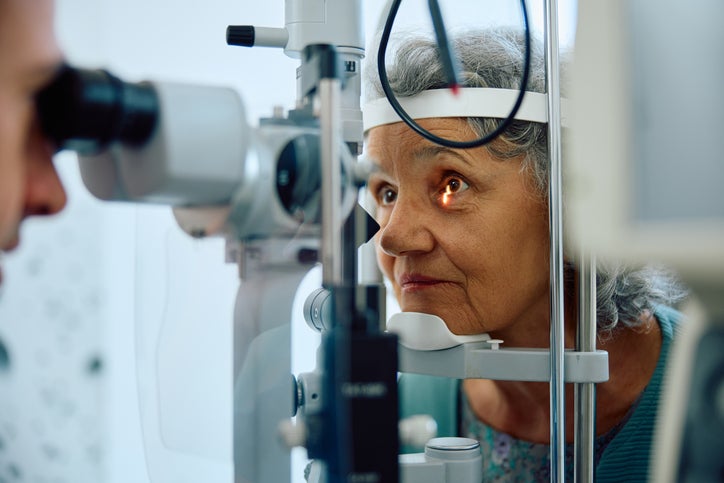
Diabetic eye exams are a crucial aspect of comprehensive diabetes care, aiding in the early detection and prevention of vision-related complications.
Understanding the Link Between Diabetes & Eye Health
Diabetes is a systemic condition that can affect multiple organs, including the eyes. Elevated blood sugar levels over time can lead to complications like diabetic retinopathy, glaucoma, and cataracts. Diabetic retinopathy, in particular, is a common and potentially sight-threatening condition that occurs when high blood sugar levels damage the blood vessels in the retina. Approximately 4.2 million adults are affected by diabetic retinopathy.
Diabetes-related eye diseases typically cause few or no symptoms until the condition is severe, making regular, dilated eye exams essential for protecting patients with diabetes from serious sight-threatening eye diseases.
Retinopathy is the leading cause of preventable blindness. Many people with diabetes can prevent retinopathy with healthy blood sugar management, by maintaining an A1c of less than 7 percent, and by working on overall time-in-range goals.
The American Diabetes Association recommends:
- Adults with Type 2 Diabetes have their first eye exam when they are diagnosed with diabetes
- Adults with Type 1 Diabetes have their first eye exam within five years of being diagnosed with diabetes
Following their initial eye exam, all people with diabetes should have their eyes checked and dilated yearly to evaluate any changes. An annual eye exam is one of the best ways for patients with diabetes to protect their eyes and help prevent future vision loss or blindness.
Diabetic Eye Exams as a Quality Measure
Diabetic eye exams contribute to improved patient outcomes and cost-effectiveness. As such, Eye Exam for Patients with Diabetes (EED)is a quality measure in various quality programs established by the Centers for Medicare and Medicaid Services (CMS). This quality measure is defined as:
Tips and Best Practices to Help Close this Care Opportunity
- The dilated eye exam must be performed by an ophthalmologist or optometrist
- When documenting history of a dilated eye exam, list the date of service, test, result, and eye care professional’s name and credentials
- The medical record must indicate that a dilated or retinal exam was performed
- A slit-lamp examination will not meet the criteria for dilated eye exam measure
- Fundus photography performed with evidence that an optometrist or ophthalmologist reviewed the result meets the intent of the measure
- Documentation of hypertensive retinopathy should be considered the same as diabetic retinopathy
- Dilated retinal eye exams with results can be included in supplemental data, reducing the need for some chart review
- Educate patients about the effects of diabetes on eyes and the importance of annual testing
- Create automatic flags in the EHR to alert staff to know when patients are due for screenings
- Utilize Care Coordination teams for patient outreach
- Send regular patient reminders for due or overdue evaluations
- Utilize appropriate coding and documentation to reflect care provided
Regular and proactive eye care can make a substantial difference in preventing vision loss and improving quality of life for patients with diabetes. Early intervention can prevent the progression of complications, reducing the need for costly treatments and surgeries in the long run. Eye exams are an important component value-based quality programs, where preventive care and early interventions are emphasized to improve patient outcomes.
Reference: 2024 UHC PATH Quality Reference Guide
About the Author


